Updated August 7, 2025 07:18AM
Destinations & Things To Do
Sports Mascot Versus Grizzly Bear: A Dramatic Duel
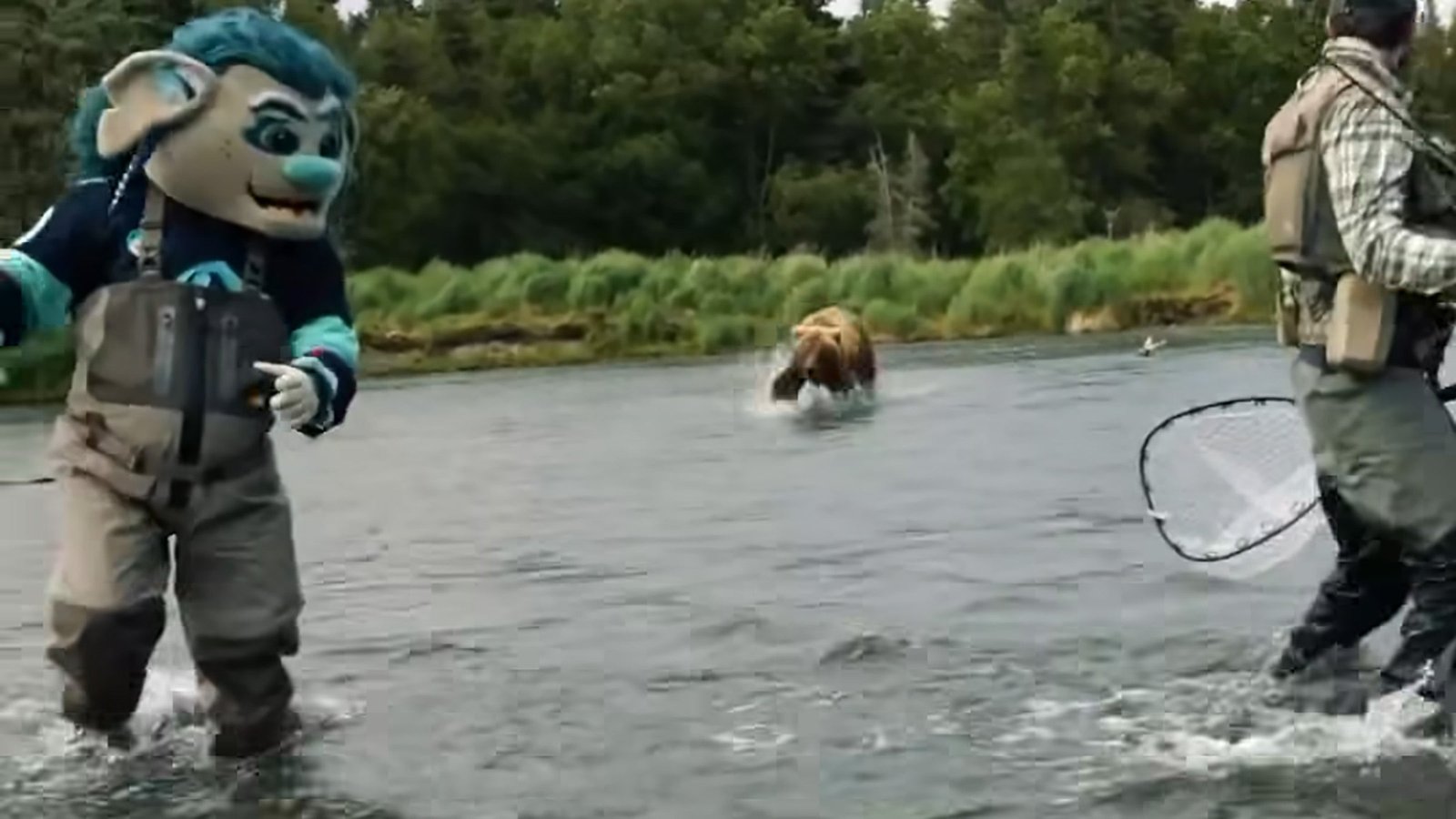
The Seattle Kraken’s Buoy was recently chased by an Alaskan brown bear, prompting an important question about sports mascot survival
(Photo: Seattle Kraken/Instagram)
Would you rather encounter a grizzly bear or a random man in the woods?
The question dominated social media discourse for a few weeks back in 2024, generating an impressive tonnage of Internet hot takes, and many women opting for the bear. What these blogs, Tweets, and lengthy Instagram posts failed to determine, however, was what would happen if the grizzly bear encountered a random man—one who happened to be clad from heat to toe in a plush costume of a professional sports team mascot.
Well, here we are in 2025 reckoning with this new important question, thanks to a bizarre if somewhat hilarious news story. This week, the National Hockey League’s Seattle Kraken team revealed that its mascot, a blue and scraggly sea troll name Buoy, was recently charged by a massive brown bear during a promotional photo shoot in Alaska’s Katmai National Park.
According to the team’s Instagram page, Buoy and Kraken player John Hayden were having their photos taken while fly fishing in a pristine river. Suddenly, a bear emerged from the riverbank and sprinted into the water, scaring them off.
“I want to blame it on Buoy—they were pretty interested in his whole look,” Hayden said in the video. “We got out of it OK, but it was a close call.”
Of course we live in the era of AI-generated video that can make even the most ridiculous bear videos seem vaguely real. If the Kraken’s clip is fabricated, then the team successfully duped the major broadcast news networks as well as Outside.
But the video provides proof that, when encountering a massive bruin, Buoy the mascot’s reaction is to run as quickly as his cowardly troll legs will take him. And it begs an important follow-up question: How would other sports mascots react when charged by a massive bear?
Go the Gorilla: Jump to Safety
Why does a team named for a celestial body have a mascot that’s essentially an extra from the cheesy 1995 adventure film Congo? Nobody knows. But what all basketball fans do know is that Go the Gorilla is perhaps the most athletic mascot in all of professional sports. Go rappels from great heights, break dances, and walks down the arena steps on his hands. He’s most famous for his high-flying trampoline dunks—he flips, twists, and does mid-air stunts that dazzle the imagination. If faced with a bruin, my guess is that Go would leap over the grumpy bear, dunk a basketball, and then sprint to safety.
Rocky the Mountain Lion: Immediately Pass Out
You might think that Rocky, the zany mountain lion mascot for the NBA’s Denver Nuggets, would use his cat-like reflexes to turn and fight the bear with tooth and claw. This assumption is, alas, wrong. Rocky would immediately faint from fear and lie unconscious on the floor, similar to a macabre scenario that played out in 2013. During the Nuggets’ pre-game ceremony, the performer playing Rocky passed out as he was being lowered to the court. Fans watched in horror as his limp body descended from the rafters.
Gritty: Fight
One of the newest is also one of the best. Gritty, the Philadelphia Flyers’ googly-eyed mascot, made his debut in 2018 and quickly became a favorite across all of sports. Why? As Gritty’s promotional copy explains, he is known for his “uniquely Philadelphian personality.” Yeah—Gritty likes to fight. He fights other mascots, players on rival teams, and (allegedly) even small children. My assumption is that Gritty would face the bear and drop his gloves. Would he win? God no—but we’d all enjoy a hilarious blooper video of Gritty’s orange hair and beard being torn from his head.
Mr. Met: Fall and Injure Himself
At 62 years old, Mr. Met, the baseball-shaped mascot for the New York Mets, is quickly approaching retirement age. But that hasn’t stopped him from attempting to appeal to Millennials and Gen Z fans. Earlier this summer, Mr. Met took the stage during a performance by alt-folk band the Lumineers midway through their concert at Citi Field. During a 15-second span, Mr. Met dropped a tambourine, stumbled to his knees, and then fell off the stage. How would he do against a bear? My guess is Mr. Met would become entangled in his fishing line, tumble into the rushing river, and drown.
Phillie Phanatic: Get Sued by the Bear
Long heralded as the best mascot in American professional baseball, the Philly Phanatic dances to Michael Jackson, impersonates Lady Gaga, and yes, occasionally gets rival players to lose their minds. Guess what—he also gets sued, a lot. The Phanatic has the ignominious reputation as the most-sued mascot in history, according to the Cardozo Law Review. In 2018 the Phanatic made headlines when he blasted a fan in the face with a bazooka that shoots hot dogs, and the impact caused real damage. Would he bring the hot dog cannon into a fight with a bear? You bet. Would the bear fight back with a team of personal-injury lawyers? Highly likely.
Destinations & Things To Do
Idaho Has Two of America’s Best Travel Destinations
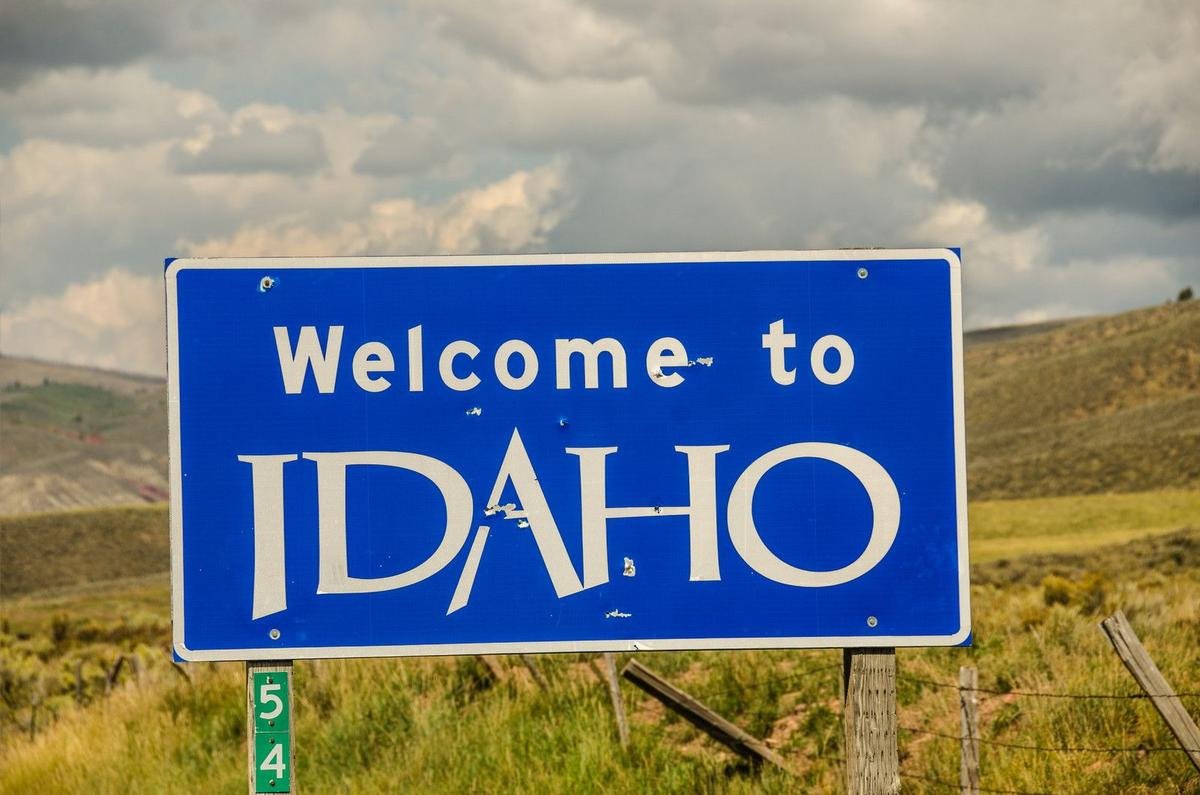
When you think about travel hot spots in Idaho, what are the first destinations that come to mind? We bet they’re NOT the two that recently made a list of the best places to visit in America in 2025!
The Sun Valley-Ketchum area may have come to mind. Not only is the region constantly in the running for “Best Of” lists for winter sports and recreation, it’s been a hot spot for celebrity sightings for decades.
READ MORE: 27 Celebrities Who’ve Been Seen in Idaho & Where They Showed Up
Once upon a time, you’d bump into the likes of Ernest Hemingway and Marilyn Monroe. Today? You’re more likely to see celebrities like Jimmy Fallon and Ali Larter wandering around town.
Matt Winkelmeye, Getty Images
Coeur d’Alene’s another part of Idaho that’s attracted stars like Justin Bieber, Mark Wahlberg and the Kardashians. Sydney Sweeney’s another famous face you may bump into there. She grew up in Spokane and spent plenty of lake days in CDA.
Even though it feels weird putting Boise on the list because we live here, some could argue we belong on that list because The Blue is a major draw for college football fans from around the country.
Loren Orr, Getty Images
While they’re all worth traveling to, World Population Review had something very different in mind when putting together a list of the 200 best places to visit in the United States.
Two Idaho Destinations Named Among Best Places to Visit in the United States
World Population Review picked two Idaho destinations that appeal to recreationists and nature lovers. Their picks? Big Springs in Island Park and the Sawtooth National Recreation Area. In choosing the destinations, they explained:
Idaho is a state perfect for those who love the outdoors! For adventurers looking to take on Idaho, Big Springs has 120 million gallons of water flowing every day and beautiful wildlife views. Additionally, Sawtooth National Recreation Area’s rugged mountain landscape is perfect for hikers and rafters looking for their fill of the great outdoors.
World Population Review also included a “Best Family Travel Destination” for Idaho. This year they chose Silver Rapids Indoor Waterpark at Silver Mountain in Kellogg. You can check out some incredible photos of it below!
KEEP READING: Idaho’s 2 Incredible Indoor Waterparks Must Be On Your Winter Bucket List
Did you know Idaho is home to not one but TWO incredible indoor water parks? They each offer something a little bit different, so scroll through to learn more about what makes them an incredible place to beat the winter blahs.
Gallery Credit: Michelle Heart
Destinations & Things To Do
Why These Are My Two Favorite Summer Jackets
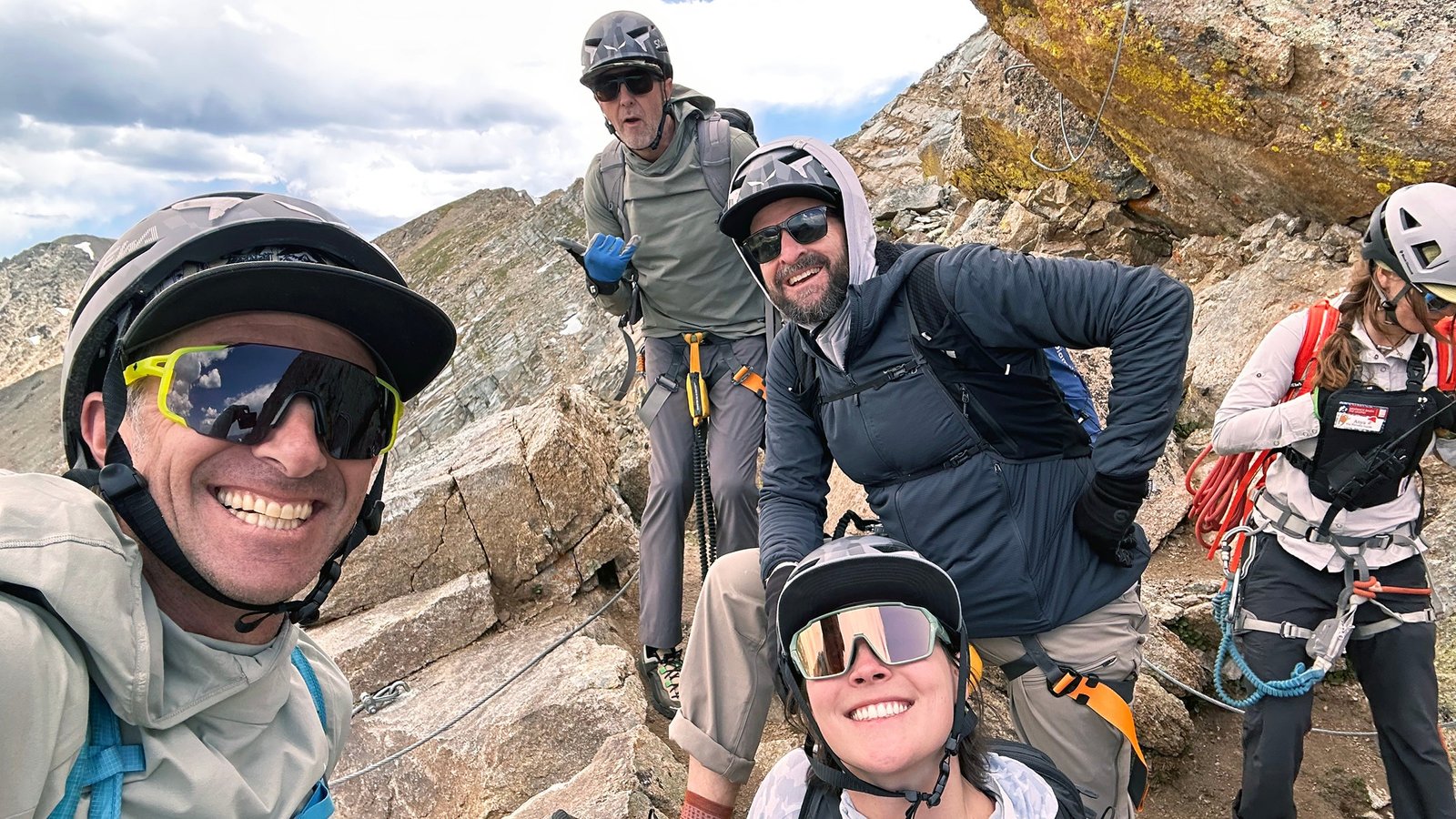
If you buy through our links, we may earn an affiliate commission. This supports our mission to get more people active and outside.Learn about Outside Online’s affiliate link policy
I keep these Flylow and Rab jackets handy year-round for their combination of warmth and breathability
(Photo: Jakob Schiller)
Published August 7, 2025 02:11PM
Even though the high temperatures where I live in Albuquerque, New Mexico, have averaged 95 degrees over the past three months, and my wardrobe has been reduced to shorts, sun hats, the most breathable shirts I can get my hands on, I’ve also been appreciating two summer jackets. To be clear, I’m not wearing these jackets during a run at noon. But on occasion, even in this sweltering heat, I’ve needed a layer to block wind and keep me warm without broiling me. These are the two standout summer jackets that get the job done—rain, shine, or suffocating heat.
The Windproof (But Breathable) Summer Jacket That’s Created by Mountain Bikers
Case in point: I recently ran up 10,500-foot Sandia Mountain, and up top the wind was howling and temps were in the low 50s. When I stopped to refuel and take in the view, I pulled out my trusty Flylow Davis Jacket ($140) to cut the wind and keep from getting chilled.
Flylow Davis Jacket
Made from a DWR-coated, stretchy ripstop nylon, the Davis summer jacket balls up to the size of an apple so it takes up almost no room in my running pack and adds almost zero weight at just over six ounces. In the summit wind, it created immediate warmth and endured getting scraped over rocks without showing any signs of wear. Just as importantly, since the Flylow Davis doesn’t block all the breeze, I was also able to keep it on as I started my descent and didn’t overheat as I worked my way back into warmer temps.
Flylow co-founder Dan Abrams told me that the company spent an obsessive amount of time picking the fabric for the Davis because they wanted to find the perfect mix of wind resistance and breathability. An avid mountain biker himself, he designed the jacket so he could wear it to keep warm while ripping down singletrack, cruising on the flats, or pushing during the next climb.
“Just like it’s easy to make a ski jacket waterproof but harder to make it breathable, it’s easy to make a wind jacket windproof but much harder to create the right balance of breathability,” Abrams said.
Flylow considers breathability so important that they list the jacket’s air permeability rating on their website. CFM stands for “cubic feet per minute,” and it relates to how much air can pass through fabric—one component of breathability. For context, a trashbag’s CFM is zero, a cotton t-shirt has a CFM of around 60, and the most permeable tech running shirt we’ve tested came in at 464 CFM. The Davis’s CFM, listed at 22.8 (verified by the Outside Lab), clearly blocks wind better than a shirt, but is far enough away from a trashbag that you really notice the airflow when it’s needed.
The Lightweight Wonder with Insulation Worth Geeking Out Over
Rab Evolute Hoody
$165 at REI $165 at Backcountry
The second summer jacket in my summer wardrobe came with me to the 13,000-foot top of Arapahoe Basin’s East Wall in Colorado. Long known as a fun place to ski steep terrain, the East Wall is also the spot for the ski area’s via ferrata course. I had just scaled the wall with a group, and emerged at the top ready for lunch. The wind was calm, but at that elevation, it was in the low 40s. I pulled out my lightly insulated Rab Evolute Hoody ($165) that I’d packed for this very situation. Like the Davis, the Evolute took up little room in my pack (balled up it was about the size of a grapefruit) and weighed a scant 12 ounces.
This hoodie is my one insulation piece that never gets put away for any season because it always provides immediate warmth, but—like the Davis jacket—is designed to be as breathable as possible in fluctuating temps. Credit the thin layer of PrimaLoft Evolve Active insulation, which I’ve found to be the most breathable insulation on the market for high-output activities. I’ve worn midlayers with Evolve Active while hunting, skiing, hiking, and climbing, and the material always does a nearly-perfect job of shedding excess heat and moisture, no matter the temp.
The secret is in the fiber design. If you want to geek out on insulation, check out my colleague Wes Siler’s deep dive into what makes Evolve Active unique. The quick summary is that designers took a cue from animal fur, which is variable across their bodies, and made the insulation’s recycled polyester fibers in variable thicknesses and lengths. The longer fibers are designed to create warmth and the shorter fibers let excess heat escape off your body without making you cold.
That microscopic design was more than I could focus on as I started my descent of the via ferrata. I kept the jacket on until I could stop at a spot where I wasn’t blocking traffic, but it worked as promised. While I sweated in the jacket for 30 minutes, both out of fear and exertion, I never once felt I was being boiled alive. I also appreciated the jacket’s tight-fitting hood that I threw on under my helmet at the start, and the fabric’s built-in stretch that gave me full range of motion as I splayed out like a starfish to reach different holds.
Another beauty of the Davis and the Evolute is that they’re great in the fall, spring, and winter as well. The Evolute was my go-to ski touring jacket all winter since I live in New Mexico and don’t need a ski shell that often. The Davis lives in my work backpack at all times, year-round, because it’s the perfect layer when the wind picks up in the fall and I need to add a touch of warmth—or if I get caught in an April rainstorm and need to stay dry while running errands.
Destinations & Things To Do
The Best Sports Bras for Summer 2025
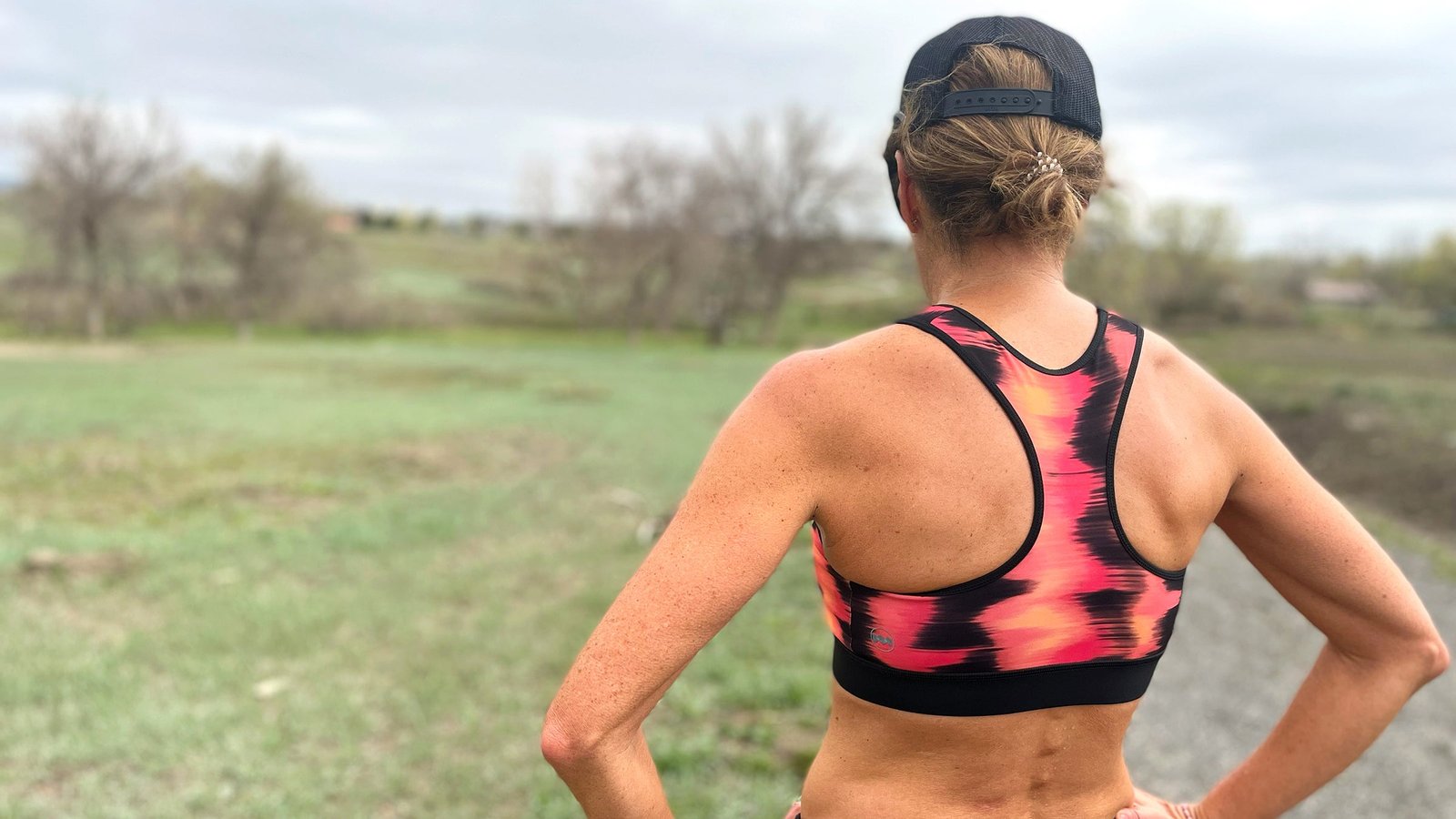
If you buy through our links, we may earn an affiliate commission. This supports our mission to get more people active and outside.Learn about Outside Online’s affiliate link policy
Eleven testers spent hundreds of hours working out in dozens of different sports bras to find the best-performing picks for every type of activity.
(Photo: Lisa Jhung)
Published August 7, 2025 02:06PM
Every woman is built differently and has a different idea of what makes the perfect sports bra. But every woman wants (and deserves) a sports bra that is comfortable and supportive, and lets her do activities with zero distraction. In light of that, we had a team of testers—all different sizes—try more than 30 of the best sports bras while hiking, climbing, practicing yoga, running, weightlifting, and more to find the models that delivered the best performance and comfort for a variety of different types of bodies, conditions, and activities.
Update April 2025: We’ve replaced the sports bras in four categories, added three new categories (best for summer, best for wearing a pack, and best simple running bra) and changed the categories of two we carried over from the fall round-up.
Best Sports Bras: At A Glance
Be sure to also check out our picks for the best women’s running shirts and tank tops.
The Best Sports Bras
(Photo: Courtesy Nike)
Best Value
Nike Swoosh Medium Support
Sizes: XXS–XXL
Pros and Cons
⊕ Fixed cups mean no pads to lose
⊕ Durable, long-lasting comfort
⊗ Pads, if you’re not a fan of them
One tester has been wearing an earlier version of this sports bra for close to 20 years. “It’s been all over the world while keeping me comfortable running, cycling, hiking, Nordic skiing, etc.,” she says. The simple, pull-on style bra wicks sweat and remains comfortable for hours. The newest version of this do-anything, durable bra comes with light padding built in (no slipping, no losing the padding in the wash), and is made with sustainable, recycled polyester materials. Its $40 price point makes it among the least expensive sports bras out there, and while it’s classified as “medium support,” it can function as high support across a range of activities for smaller chest sizes. It also lasts for-e-ver.
Best for Large Chests
Brooks Crossback 2.0
Sizes: 30–40 band, AB–DDE cup
Pros and Cons
⊕ Extremely comfortable
⊕ Molded cups stay put
⊗ Only medium impact for the largest of chests
The Brooks Crossback 2.0 bra is not the absolute most supportive sports bra for large chests during the highest impact activities, but for virtually everything else, we loved its ability to support us comfortably. While most sports bras intended for bigger chests achieve support by either compressing tightly or encapsulating with stiff materials, zippers, and/or burly fasteners, the Crossback 2.0 utilizes strategic engineering—reinforced materials in the shoulder straps and chest band—and a wide range of size options for an almost custom fit. Testers loved how this bra’s smooth, flat crossback straps didn’t dig into shoulders and worked great under a backpack, as well as the lack of irritating seams and the soft but effective encapsulation.
“This works nicely for medium-impact activities without smashing you to death,” said a tester. “Love the snug fit of the material, but not snug as in too tight,” said another. “I can’t say enough,” gushed yet another. “I’m obsessed with this bra and how this bra performs and that it never chafes me at all.”
Our team wore this sports bra skiing, hiking, weightlifting, cycling, and running, and only one tester craved more support while running. It also dries quickly from sweat or after washing and is comfortable during prolonged wear.
(Photo: Courtesy Patagonia)
Best for Hot Weather
Patagonia Live Simply Bra
Sizes: XXS–XL
Pros and Cons
⊕ Minimal and comfortable
⊕ Dries extremely quickly
⊗ Can fit a little loose under the arms
We’ve worn this bra hiking in 106-degree heat, sweaty weight-lifting sessions, running in all sorts of weather, and jumping in and out of lakes. This great sports bra remained comfortable throughout all of those athletic activities and even while working at a desk for hours.
Its bonded seam construction lies flat and smooth with zero irritation, and the extremely lightweight, soft, 100-percent polyester tricot fabric dries ridiculously quickly. We appreciated that, along with the anti-microbial treatment (HeiQ Mint) that combated odors when we kept the bra on after workouts. Because it doesn’t contain Spandex, the comfortable sports bra isn’t as supportive as some others, but it also doesn’t stretch out as much. It’s best for low-impact, or any activity for A to C cups.
Best for High Impact
Rabbit UtiliBRA-vo
Sizes: XS–XL
Pros and Cons
⊕ Über-secure phone pocket
⊕ Classic racerback fit
⊗ Not the most breathable
If you love classic racerback bras, add a few of these to your underwear drawer. Chances are good they’ll fit and support you well, as one of our testers raved: “The fabric hits a sweet spot of compression that I think will please 85 percent of runners—not too much, not too little.” This sports bra also has the most secure back phone pocket we’ve ever used, without being over-designed. “Most phone pocket bras try to be all fancy and featured and space-agey,” another tester said. “This is the first one I’ve tried that’s basically just a regular old racerback, both in terms of fit and looks.” The polyester-spandex fabric is slightly thicker than the other favorites, making it a great sports bra for high-impact activities year-round.
(Photo: Courtesy Janji)
Best for Wearing on Its Own
Janji Pace Sports Bra
Sizes: XXS–XXXL
Pros and Cons
⊕ Best range of sizes among pull-over bras
⊕ Unique, flattering and supportive straps
⊗ Removable pads come out in wash
This seemingly simple sports bra has design details we fell in love with—a flattering neckline with double straps, positioned narrower than most, that weave between each other when they cross mid back. This great sports bra proved supportive enough even for C- to D-cup testers doing high-impact activities like running and jumping. “Nice encapsulation and I love the cross back with support!” said one. “You don’t usually get ‘cute’ with ‘supportive.’” We wore this skate skiing, running, cycling, and, when a tester couldn’t find her bikini, at swim lessons with her son. This bra proved comfortable and up to the task for all activities.
Best Adjustable Fit
Tracksmith Allston Adjustable Bra
Sizes: XS–L
Pros and Cons
⊕ Adjustable shoulder straps and chest strap
⊕ Convertible to racerback
⊗ Clip can be felt in racerback mode
This sports bra is adjustable three ways: the chest band has three clips for dialing size around the ribcage, the shoulder straps are length-adjustable, and the bra can convert to racerback via a clip in the middle of the back, which puts it in high-impact-support mode. The racerback clip can be switched back and forth during one workout. “I love the adjustability and the smooth fabric,” said a tester who wore the comfortable sports bra while hiking, biking, and running. “It’s a great bra for someone who might end up wearing a sports bra all day because of logistics, but who wants to ease off the intensity for aprés workout.” The Allston Adjustable is made of Tracksmith’s luxuriously smooth nylon-elastane blend, with interior cups lined with nylon-elastane blend powermesh, which enhances compressive support.
(Photo: Courtesy Under Armour)
Best for Low Impact
Under Armour UA Infinity 2.0 Low
$35 at Under Armour $35 at Al’s
Sizes: XS–XL, Cups A–C and D–DDD
Pros and Cons
⊕ Built-in padding doesn’t come loose
⊕ Soft, comfortable, breathable
⊗ Can be hard to find a perfect fit
This good-looking, lightly padded sports bra is offered at a steal of a price. We loved how there aren’t any irritating seams and that the injection-molded padding’s strategic patterning gave the bra a lightweight, breathable feel. We found the bra dried quickly even after working up a big sweat, which we loved for keeping us from feeling gross underneath our clothes when running errands on the way home from a workout.
The pullover design and lack of a clasp on the backside makes this a great choice for workouts that include mat work, like belly-up core work, Pilates, and yoga moves. And the mesh panel on the back “adds breathability without any distractions,” said a tester.
Not only does the built-in padding eliminate the problems of losing a pad in the washing machine or having to uncrumple removable pads every time we put on the bra (truly, the worst), but we found the shape flattering and not excessive. Note that some testers found that the material buckled on the sides—although with so many size options, they thought they could likely find an ideal fit with a different size/cup combination.
Best for Wearing With a Pack
Oiselle Flyout Bra
Sizes: 2–14
Pros and Cons
⊕ Wide, flat seams remain comfortable under a vest or pack
⊕ Full coverage provides modesty
⊗ Thicker material can feel warm
The Oiselle Flyout Bra has been a favorite among testers for its ability to carry a phone comfortably and securely in the mesh pocket midback. But we also love this sports bra for its wide, flat shoulder straps that stay comfortable under fully loaded hydration vests and backpacks. We’ve worn this bra for long days on the trail with a hydration vest and have never experienced chafing. The wide chest band and shoulder straps provide ample coverage and combine with compressive fabric for support, even for our large-chested testers. We love that this bra comes in a wide range of sizes, like women’s dress clothes, so you can find a perfect fit (use the size guide on the Oiselle website to help).
Best for Carrying a Phone on the Run
Rabbit Strappy Pocket Bra
$55 at Rabbit $55 at Running Warehouse
Sizes: XS–XL
Pros and Cons
⊕ Carries a phone midback
⊕ Cute enough to wear on its own
⊗ Thin shoulder straps can dig in under a pack
The Rabbit Strappy Pocket Bra has become our lead tester’s go-to for travel. It’s a simple, good-looking sports bra that carries a phone or hotel key card easily and comfortably, and it packs down small, especially with the pads removed. The bra also stays put while diving into bodies of water (ocean, lake) post-run and dries fairly quickly afterward, ready for the next outing. The thin shoulder straps and lower neckline give the bra a stylish, flattering appeal while still providing support and coverage. The next-to-skin liner, made from a material that uses recycled coffee grounds, feels cool, helps control odor (another travel bonus), and helps the bra dry quickly.
Best Simple Running Bra
Janji Infinity Sports Bra
Sizes: XXS–XXXL
Pros and Cons
⊕ Reversible
⊕ No clasps on backside
⊗ Doesn’t dry as quickly as some others
There is something to be said for a simple, no frills sports bra—no pads, no clasps, just a traditional pullover racerback. The Janji Infiniti Bra is just that, and testers appreciated its “no fuss” functionality. The lack of clasps on the back make this a good bra for doing mat work: stretching and exercising on your back after a run, or for activities like yoga and Pilates. One tester said she’s looking forward to wearing this while on an SUP or even swimming, while another said the full-coverage cut (it effectively covers side-boob, for most) “is appropriate for stripping down in front of strangers.”
We love that this bra is reversible. The triple-layer construction of nylon/spandex with a polyester mesh sandwiched between the two color options provided enough compressive support for all but our largest-chested runners. Those three layers also make the bra take a bit longer than other bras to dry from sweat or while air-drying after washing. But for two bras in one, we’ll take it.
How We Tested Sports Bras
- Number of testers: 11
- Number of sports bras tested: 22
- Hours working out in test bras: 500
- Toughest testing conditions: Two-plus hours whitewater paddling and then hiking from the bottom of the Grand Canyon to the South Rim while carrying a full backpack full of gear. Close second: Downhill skiing with a toddler.
We wore these sports bras for running, cycling, cross-country skiing, downhill skiing, yoga, hiking, dog walking, camping, and working at a desk. Every tester wears a different size sports bra, ranging from A to DDD cups. If at least two testers agreed that a bra was comfortable and functional, it made our short list. Then we narrowed down the contenders based on functionality for various sports, style, and price.
Meet Our Lead Testers
Lisa Jhung lives and works in Boulder, Colorado, where she writes, edits, and tests gear by doing a variety of outdoor winter sports: running (road, trail, and full-on mountain), Nordic skiing, snowboarding, dog-walking, etc. She also does yoga and lifts weights, sometimes by carrying flagstones around her yard and doing overhead squats and chest presses with a digging bar. She likes to get sh** done while strength training.
How to Choose the Best Sports Bras
When shopping for the best sports bras for you, you need to consider four factors: intended usage, comfort, support, and breathability.
Usage
Are you looking for a good sports bra to wear on its own or under your clothes? Will you be wearing it with a running hydration pack or hiking backpack? Do you want to be able to do yoga, Pilates, or other exercises on your back (and so, don’t want clasps or hooks back there)? Do you need your sports bra to carry your phone (or do you always wear a pack or pockets elsewhere)?
Comfort
Comfort is personal. Nothing can replace trying on the sports bra to ensure it fits your body and the fabric feels good against your skin. Each brand sizes their sports bras differently, so be sure to try on a range of sizes.
Support
When it comes to support, different categories like “low impact” and “medium support” can be confusing because different brands define them in different ways, and the amount of support needed for various activities completely varies by the individual. In general, bras marketed for low-impact activities like yoga, hiking, or cycling will offer less support and technical features than those for high-impact activities, like running or HIIT classes. On the flip side, sports bras designed to offer higher support may be less breathable and more constricting.
If you have a small cup size, you may find that low- and medium-support sports bras work perfectly well for high-impact activities, but women with larger cup sizes often need those “high support” bras even for some low-impact activities. Whatever you choose, know that the sports bra’s underband—the most important part for support—should fit securely but not so tightly that you can’t breathe. (Studies have shown that tight sports bras can restrict breathing and affect running performance.) The straps should not dig into your skin or leave red marks when you take the sports bra off.
Breathability
Too much sweat accumulation on a sports bra is not only uncomfortable but unhygienic, trapping bacteria on your skin and back. Sport-specific fabric blends—often made with polyester, nylon, or merino wool—should have strong moisture-wicking properties, and sports bras made of thinner fabric will allow more heat and perspiration to pass through.
-

 Brand Stories3 weeks ago
Brand Stories3 weeks agoBloom Hotels: A Modern Vision of Hospitality Redefining Travel
-

 Brand Stories2 weeks ago
Brand Stories2 weeks agoCheQin.ai sets a new standard for hotel booking with its AI capabilities: empowering travellers to bargain, choose the best, and book with clarity.
-

 Destinations & Things To Do3 weeks ago
Destinations & Things To Do3 weeks agoUntouched Destinations: Stunning Hidden Gems You Must Visit
-

 Destinations & Things To Do2 weeks ago
Destinations & Things To Do2 weeks agoThis Hidden Beach in India Glows at Night-But Only in One Secret Season
-

 AI in Travel3 weeks ago
AI in Travel3 weeks agoAI Travel Revolution: Must-Have Guide to the Best Experience
-

 Brand Stories1 month ago
Brand Stories1 month agoVoice AI Startup ElevenLabs Plans to Add Hubs Around the World
-

 Brand Stories4 weeks ago
Brand Stories4 weeks agoHow Elon Musk’s rogue Grok chatbot became a cautionary AI tale
-

 Brand Stories2 weeks ago
Brand Stories2 weeks agoContactless Hospitality: Why Remote Management Technology Is Key to Seamless Guest Experiences
-

 Asia Travel Pulse1 month ago
Asia Travel Pulse1 month agoLooking For Adventure In Asia? Here Are 7 Epic Destinations You Need To Experience At Least Once – Zee News
-

 AI in Travel1 month ago
AI in Travel1 month ago‘Will AI take my job?’ A trip to a Beijing fortune-telling bar to see what lies ahead | China

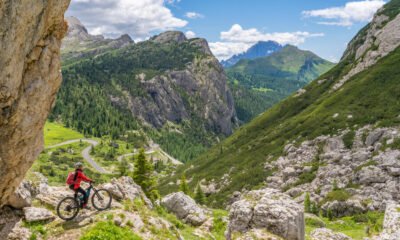





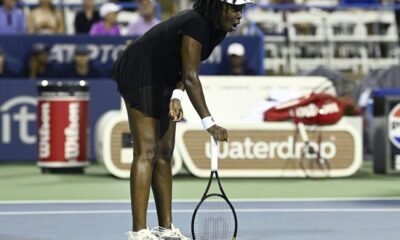

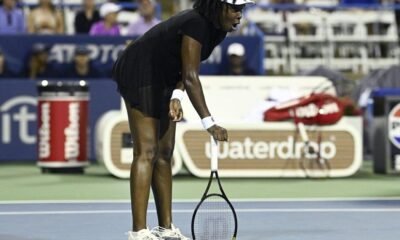



You must be logged in to post a comment Login